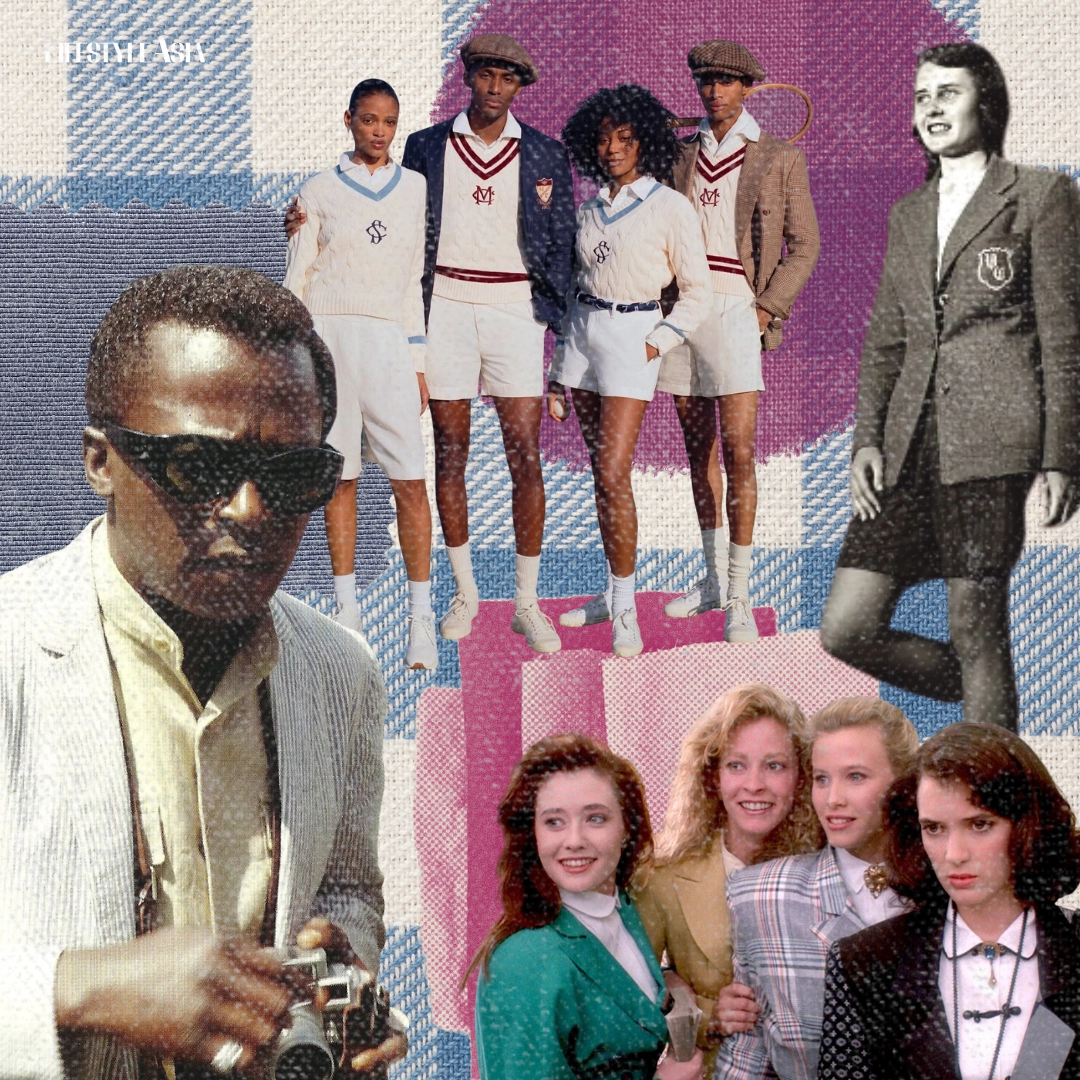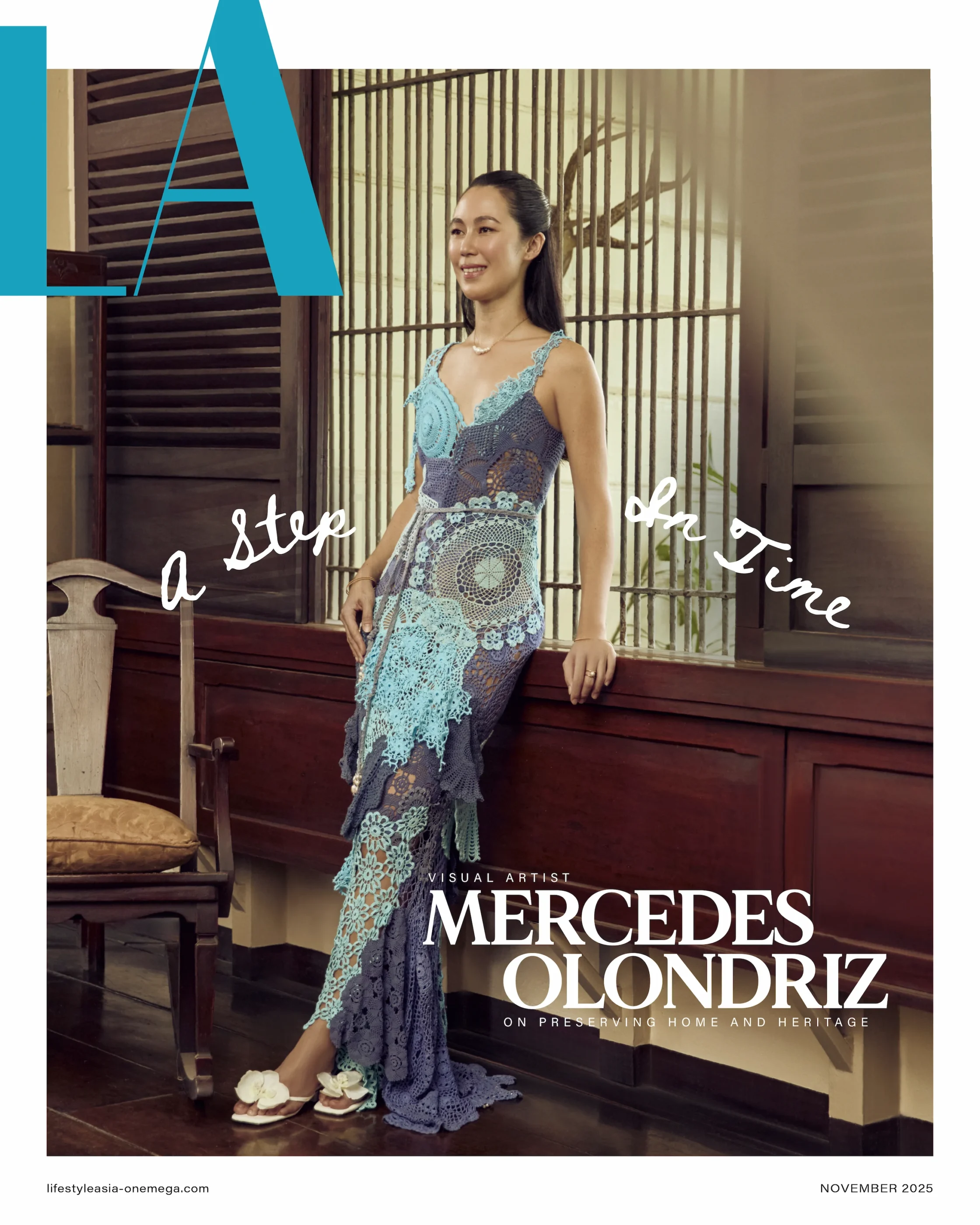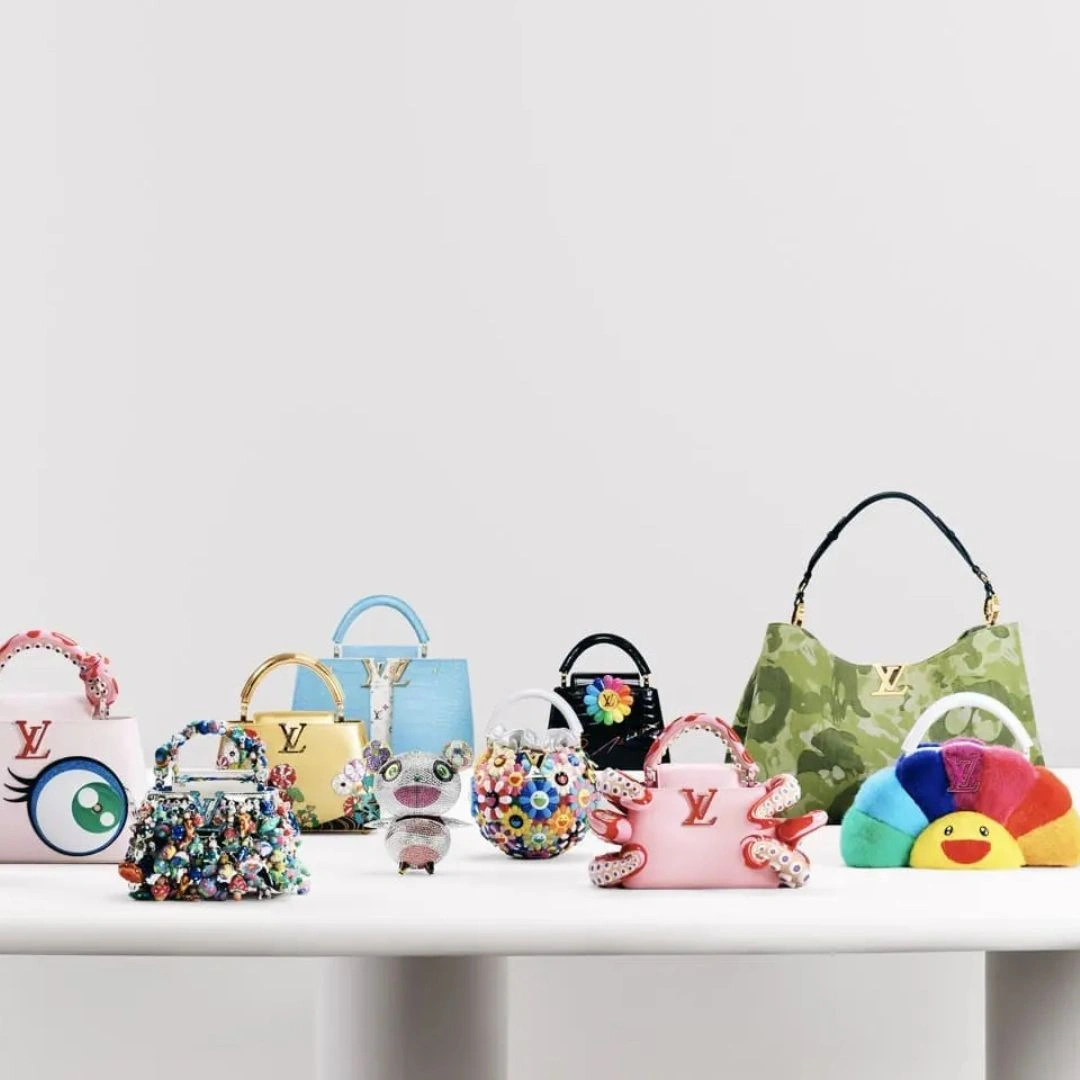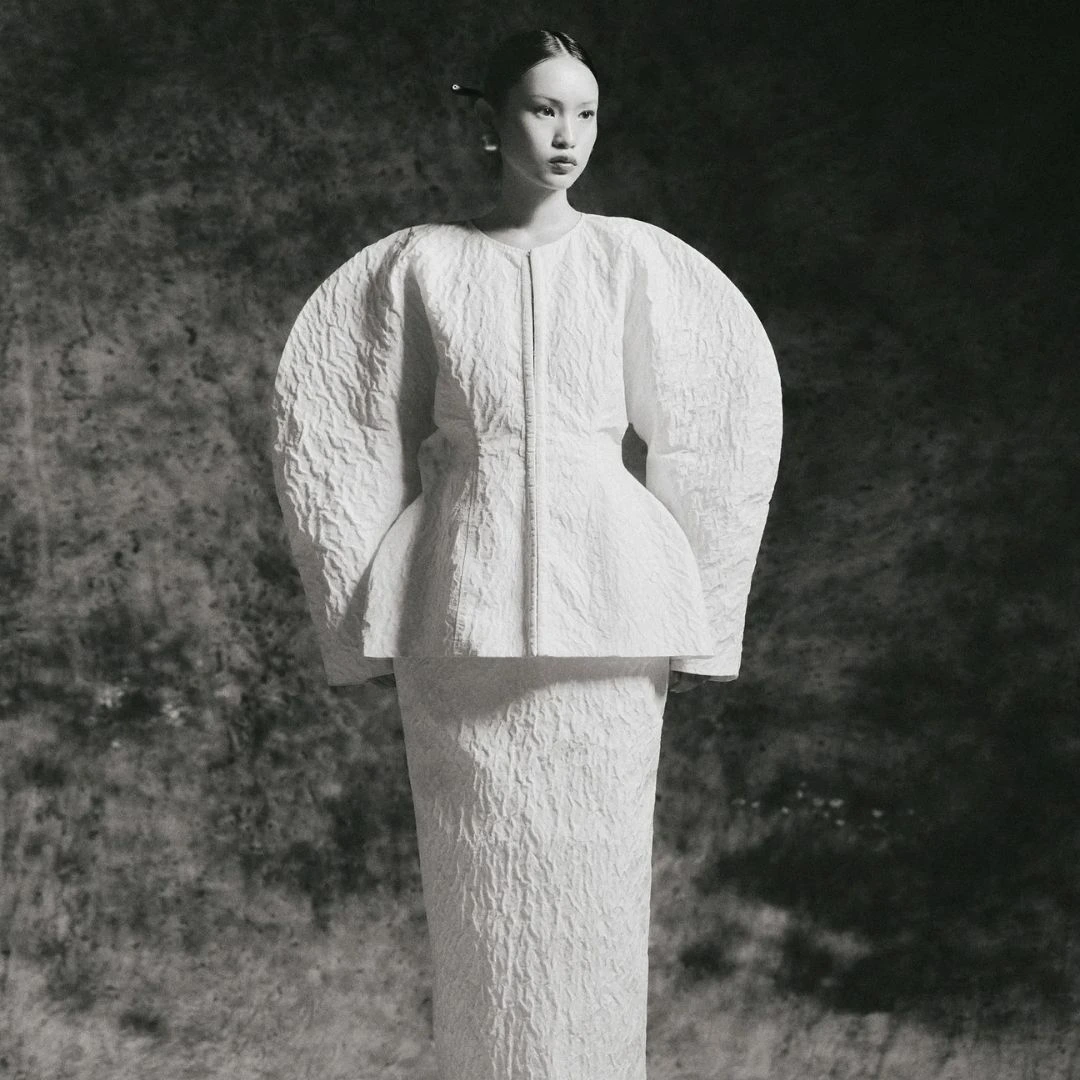Everyone knows the preppy look popularized in runways and movies like Heathers—but how did this aesthetic, long associated with wealth and privilege, arise?
The preppy style is something numerous luxury brands like Ralph Lauren, Tommy Hilfiger, and Brooks Brothers have showcased on their runways and in their stores. For years, people have used the term to package and summarize a distinct aesthetic linked to the upper echelons of academia and greater society. It’s a genre of fashion that continues to captivate through pop culture, as seen in shows like Gilmore Girls, as well as films like Dead Poets Society, Heathers, and Mona Lisa Smile. Fashionable celebrities like Pharrell Williams and Tyler, the Creator are also steadfast fans and proliferators of the style.
Its presence has been so pervasive and subliminal that we don’t tend to think about where it came from, only that it remains a permanent fixture in the fashion lexicon. But where exactly did this look come from?

READ ALSO: KATSEYE, Representation, And The Power of Denim
What’s Preppy?
Fashion items like sweater vests, tweed jackets, shiny penny loafers, plaid skirts, and long socks are often associated with the prep aesthetic. The word “preppy” comes from “preparatory school,” a kind of educational institution that wealthy youth would attend before university; the aforementioned items were often part of these students’ mandated style or uniform, hence the name. But if we’re getting into specifics, the preppy look many of us know and love today was mainly cultivated in the halls and fields of America’s elite Ivy League schools.

University Looks: How Vassar’s Trendsetters Started A Movement
The preppy look started entering public consciousness when Life magazine released a 1937 article on student life in Vassar College, one of America’s top universities, where many of the rich sent their children to. As The Wall Street Journal recounts, the article’s most notable revelation was a fashion trend that emerged within the institution’s hallowed halls. The cool and elite Vassar girls of the time wore “tweed skirts, Brooks Brothers sweaters, polo coats, saddle shoes, and jeans,” and so everyone else wanted to as well.
Life‘s visual breakdown of this academic style gained so much traction that Macy’s—one of America’s oldest department stores—launched a campaign that would grant access to all the fashion items listed in the popular feature.

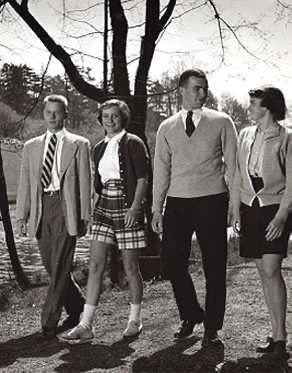
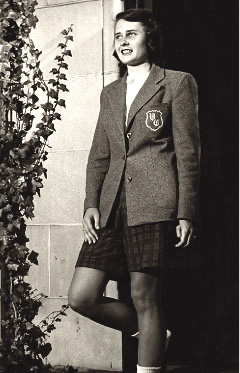
Safe to say, the endeavor met large success, and Life titled the phenomenon “Vassar Girls Set Styles for Millions” in a separate coverage. The style that was once limited to the wealthy began entering popular culture—a space it continues to occupy to this day.
A Status Symbol
For the most part, the preppy style will always trace its origins to a white, privileged past. That said, the aesthetic is arguably more of a class indicator, rather than a racial one. Black students from wealthy backgrounds stuck to the dress code, as per the Wall Street Journal’s article. Miles Davis, the famous jazz musician, often sported classy looks with finely-tailored jackets and shirts from Brooks Brothers in the 1940s to 1950s.

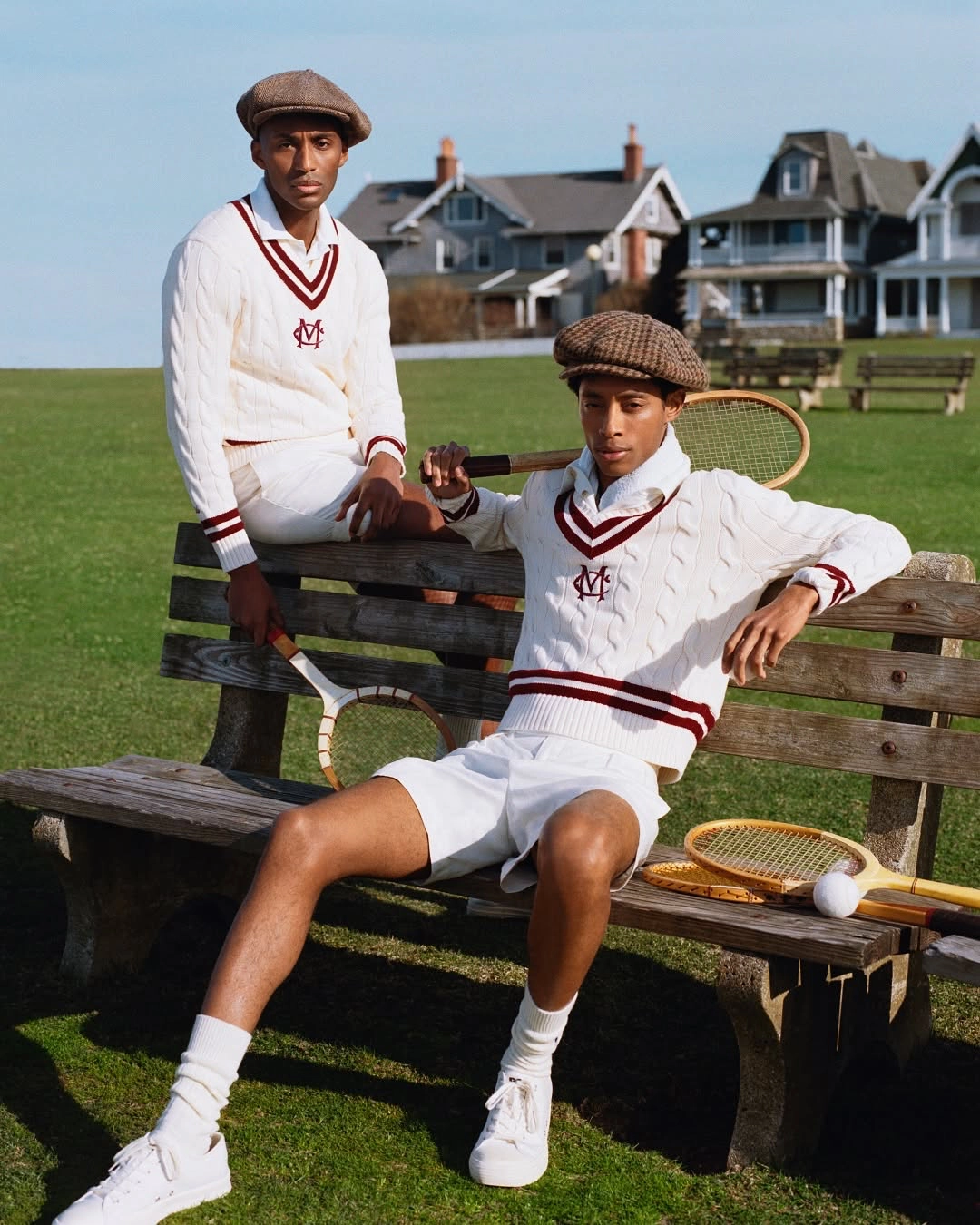
“The roots of preppy style can also be traced to a focus on social achievement, uniformity of style, propriety, proper decorum, and class distinction,” stated an article from Men’s Flair. “Codes, traditions, and sports also helped to nurture a bond and familiarity among budding preps and instilled in them a feeling of belonging.”
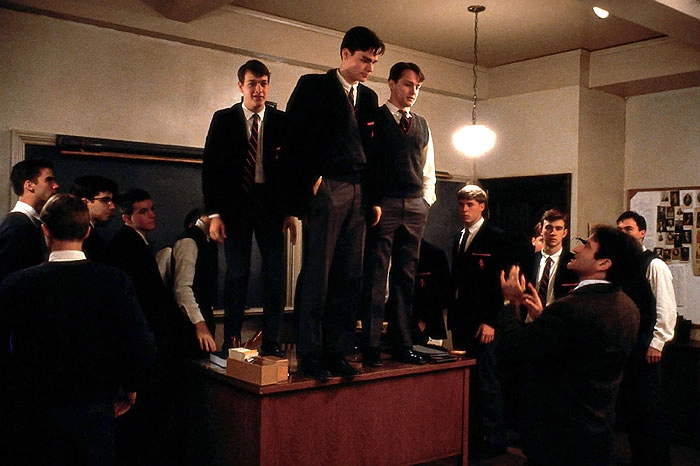
The Many Iterations Of Preppy
The preppy style has gone through different iterations throughout the decades, usually following what’s most trendy among the rich or their largest demographic. The conditions that cultivated the preppy style’s success already began manifesting in the 1930s to 1950s, as items like Oxford shirts, cable knit sweaters, and loafers became all the rage.
Women began embracing trousers and loose-fitted tops, so many of the preppy ensembles of the time followed suit. In fact, one can say there’s something empowering about the history of preppy fashion. The privacy and seclusion afforded by private institutions like Vassar meant that female students could focus more on comfort, wearing outfits that supported both their studies and extracurricular activities. “In the library they seem so comfortable and free: they read curled up in deep armchairs or sitting cross-legged on the floor, scattered through little rooms by themselves or gathered together in large halls […] How I envy them,” shared Simone de Beauvoir after visiting the college in 1947.

By the late 1950s to 1980s, popular sports among the wealthy became big influences on preppy style. Garments and shoes worn in activities of the rich—like horseback riding, sailing, and lacrosse—became staples of the aesthetic. That’s why nautical-themed, striped clothing and polo shirts are now inextricable parts of preppy style.


When Lisa Birnbach and Jonathan Roberts’ satirical, tongue-in-cheek reference guide titled The Official Preppy Handbook hit shelves in the 1980s, the style rose in popularity like never before. Almost everyone could gain access to the “formula” of preppy fashion. So began the second largest phase of the aesthetic’s democratization since Life magazine created its 1930s Vassar feature.
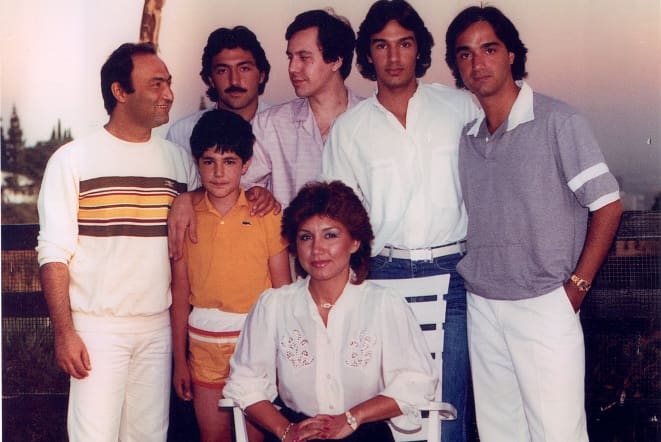
Preppy Style Now
Consumers can find preppy clothes nearly everywhere today. Both fast fashion and luxury brands carry the items, which means anyone can dress like an Ivy League student of generational wealth. Certain brands may have modernized designs to suit the preferences of younger consumers, but for the most part, much of the old remains.

With all that said, is the “preppy” style still special despite its ubiquity? Now that people have easy access to reasonably-priced clothing that exudes the aesthetic, doesn’t that defeat its entire purpose as a status symbol? That may be the case, but it’s an inevitable progression for a fashion movement that’s been around for so long.
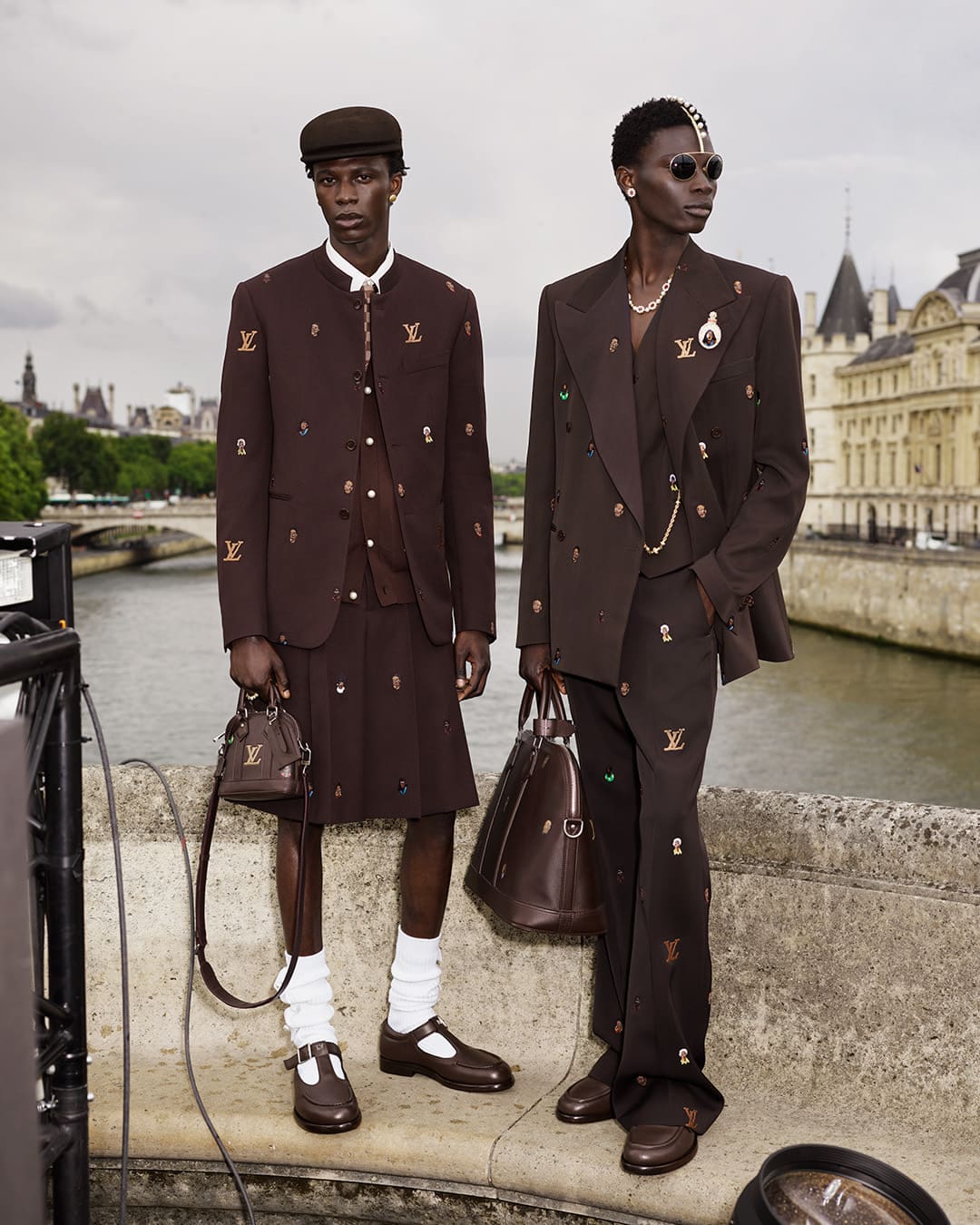
Rather than focusing on what it once stood for, perhaps the next course of action would be to look at what it’s always been: a classic and reliable aesthetic that returns time and time again, reinventing itself while still retaining its long-cherished aspects.
“You can always fall back on those pieces, that style,” wrote fashion designer Jeffrey Banks, as per The Wall Street Journal. “It is always appropriate.”
